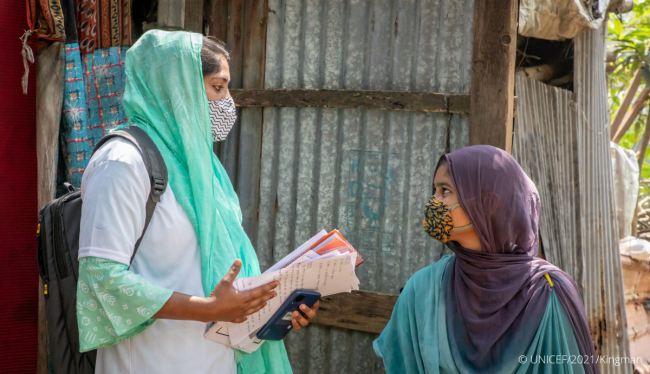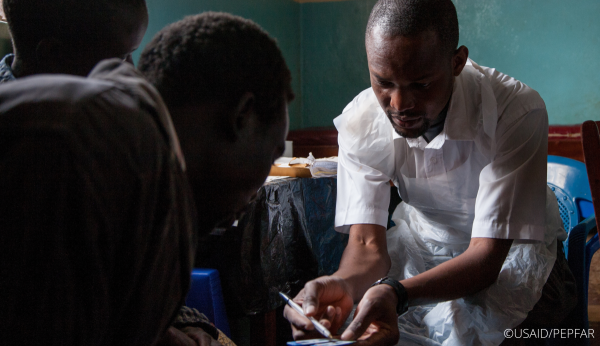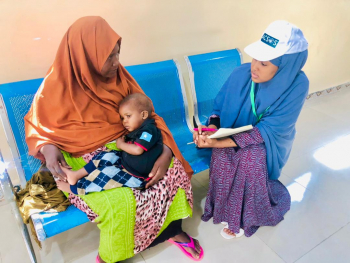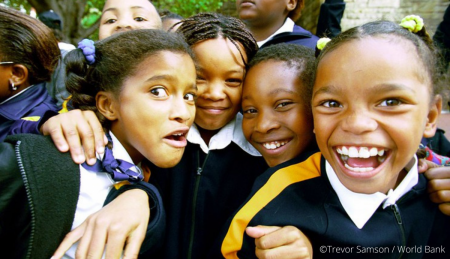
Strengthening the role of Social Service Workforce in Social Protection Systems
Submitted by Alena Sherman on Wed, 10/19/2022 - 6:06pmby Tomoo Okubo, Social Protection Specialist, UNICEF and Aniruddha Kulkarni, Global Technical Lead, Child Protection Systems, UNICEF (originally developed as a discussion paper by UNICEF and Global Social Service Workforce Alliance based on research by Julie Drolet, Professor of Social Work, University of Calgary)
Key Messages:
- Children and families, particularly the most vulnerable, including girls, children with disabilities, children on the move, and children without parental care, face multiple risks and deprivations across the life course. Social protection responses such as social transfers and social insurance programmes, as well as social care and support services for those with additional or complex needs, are key to addressing poverty and vulnerabilities.
- The social service workforce plays an important role within social protection systems by connecting children, individuals, and families with a range of social services across sectors.
- Despite the increasing challenge of poverty and vulnerability exacerbated by the COVID-19 pandemic, conflict and climate change, as well as the increasing recognition of the role of social service workers, investments in strengthening the workforce remain low across most countries.
- Building on country experiences and lessons learnt over the past years, this blog aims to clarify the role of the social service workforce in the social protection system. It also outlines key considerations for strengthening the social service workforce in their integral role in delivering effective and efficient social protection programmes and services.
1. Introduction
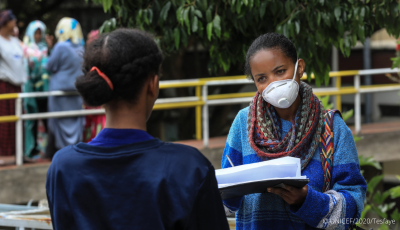 Important commitments have been made under the 2030 agenda for Sustainable Development, ranging from ending poverty, reducing inequality, promoting health, developing education and skills, as well strengthening access to justice and ending violence. Central to this transformative agenda is the guiding principle of making sure that no one is left behind. This can only be achieved by combatting the structural causes which cause individuals, families and communities to face a range of risks and threats, and which leave many marginalized and socially excluded.
Important commitments have been made under the 2030 agenda for Sustainable Development, ranging from ending poverty, reducing inequality, promoting health, developing education and skills, as well strengthening access to justice and ending violence. Central to this transformative agenda is the guiding principle of making sure that no one is left behind. This can only be achieved by combatting the structural causes which cause individuals, families and communities to face a range of risks and threats, and which leave many marginalized and socially excluded.
While major progress has been made towards some of the goals in the 2030 agenda, multiple risks, including the COVID-19 pandemic, armed conflict in many countries, and the widening effects of climate change, are now threatening the progress made over many decades. The people and groups ‘left behind’ by social and economic development are disproportionally affected by these risks, leading them to experience higher levels of multidimensional poverty and social vulnerability. The need for connecting those in greatest need to timely, adequate and comprehensive social protection, including social transfers and targeted and integrated social services and support, is an urgent priority in achieving the SDGs and ensuring no one is left behind.
Social protection has become a key pillar of response to poverty and vulnerabilities facing children, individuals and families across the globe. Social protection is defined as ‘a set of policies and programmes aimed at preventing and protecting all people against poverty, vulnerability and social exclusion, throughout their life cycle placing a particular emphasis on vulnerable groups.’[1] Under this broad definition, the specific programmes offered are defined under each country’s strategies, policies or frameworks, and they commonly include:
- Social transfers (such as cash transfers, tax credits, in-kind transfers)
- Social insurance (such as health insurance, unemployment insurance)
- Labour and jobs programmes (such as family friendly policies and livelihood programmes)
This note focuses on the integral role of the social service workforce in social protection systems, and in particular, in ensuring access to social protection programmes such as those outlined above, combined with services of support, care or protection for people with additional needs.
The social service workforce has a unique and critical role in addressing poverty, vulnerability, gender inequality and social exclusion at a systemic level. Social service workers do so by developing a comprehensive understanding of the needs of children and families, carrying out assessments, developing case plans and connecting them with necessary support and services across sectors. However, for the social service workforce to effectively perform these functions, they require adequate investment and support. To help inform the investment required, the following sections explore who comprises the social service workforce, their key functions – especially in social protection programmes and services, and the important considerations in strengthening the workforce.
2. Understanding the workforce: who are they and what roles do they play?
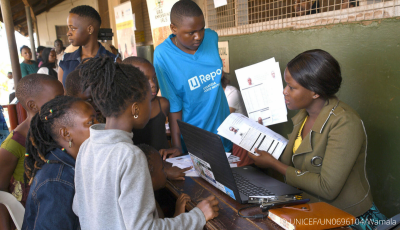 The social service workforce is defined by the Global Social Service Workforce Alliance as including both paid and unpaid, governmental and non-governmental, professionals and para-professionals, working to ensure the healthy development and well-being of children and families.[2] Concretely, the workforce is composed of people with a range of job titles, including (but not limited to) social workers, social educators, social pedagogues, child-care workers, youth workers, child and youth care workers, community development workers, community liaison officers, community workers, welfare officers, social or cultural animators and case managers.
The social service workforce is defined by the Global Social Service Workforce Alliance as including both paid and unpaid, governmental and non-governmental, professionals and para-professionals, working to ensure the healthy development and well-being of children and families.[2] Concretely, the workforce is composed of people with a range of job titles, including (but not limited to) social workers, social educators, social pedagogues, child-care workers, youth workers, child and youth care workers, community development workers, community liaison officers, community workers, welfare officers, social or cultural animators and case managers.
While social work as a profession has developed over a long period of time, and in many countries is the dominant profession in the social service workforce, this brief takes into account the wider workforce, as other categories of professionals and para professionals have evolved over time and also make invaluable contributions to care, protection and support for people in need, and to achieving social justice.
A dedicated and qualified social service workforce is essential to coordinate efforts and resources and to provide a system of support for children and families that coordinates inputs across all sectors. While the most commonly understood role of social service workers may be related to their role in delivery of response services – in directly reaching the families and children in need, it is important to recognize the role of social service workers as extending beyond response, and covering a wide range of promotive, preventive and rehabilitative functions, provided at macro, mezzo and micro levels, across all sectors.[3]The three main categories of services can be understood as follows:
RESPONSE SERVICES
At the micro level, the social service workforce respond to identified needs by:
- Offering the first point of contact for children, families and other individuals in need of support, care or protection;
- Assessing and determining the needs and best interests of children and families, and others in need, across the life course;
- Assisting people in need with accessing social protection programmes, and coordinating those programmes with other social services, including social care, child protection, protection from gender-based violence, mental health services and psychosocial support;
- Connecting people with, and ensuring their access to, other sources of help, including relevant health, education, protection, legal and livelihood services.
PREVENTIVE SERVICES
While responding to address immediate needs and risks is critical, intervening early to prevent or mitigate those needs or risk factors and vulnerabilities, has more potential for achieving long-term benefits, and is therefore also the most cost-effective approach. Prevention work by the social service workforce is undertaken at both mezzo (for a whole community) and micro levels (for individuals and families). Preventive services include:
- Community outreach to identify families and children with additional needs and vulnerabilities (including living in poverty or at risk of poverty).
- Providing them with access to relevant social protection schemes, including social transfers, social insurances, employment support, and social services to prevent them from falling into poverty and destitution, to reduce vulnerability, to build resilience and life skills (e.g., parenting) and to address additional needs (e.g., for children with disabilities and their families, young people leaving alternative care etc.).
- Through community outreach and awareness raising, identifying and addressing social norms and harmful behaviours that would otherwise contribute to social problems.
PROMOTIVE SERVICES
Social service workers who work at the macro level oversee the functioning of overall systems of social protection and social services, including planning, delivery, monitoring and evaluation. Specifically, they work to secure and manage budget allocations; advocate for and develop policies and programmes; oversee human resources and social service institutions, manage reviews and evaluations of the system; and steer strategic shifts in the way the system is managed. Social service workers can also undertake a range of promotive functions at the mezzo level, such as mobilizing entire communities to protect children and facilitating dialogue with community leaders. As poverty and vulnerability are often rooted in structural inequities and discrimination, the social service workforce can also play a transformative role in changing the power imbalances that create and sustain poverty in all its dimensions, vulnerability, discrimination and social exclusion.
Finally, in understanding the wide range of functions that the social service workforce can perform, it is important to acknowledge that these functions should be offered through a coordinated network of interventions and support. For example, a community worker or volunteer may identify families at risk of poverty and link the families with a local officer who administers cash transfer programmes. Likewise, a social worker can identify children and individuals who may already be included in social protection programmes but are also at risk of violence, and refer them to protection services. Building such an integrated network of services allows families to access a range of types of support, and ensures quality services are available when and where they are most needed. Within such a network, it is important that the social service workforce across sectors have a clear understanding of their individual functions, that other professions recognize and respect their roles, and that effective coordination and case management mechanisms, that reach across sectors, are available to ensure seamless referral, support and follow-up.
3. Ways forward – key considerations in strengthening the SSW in the social protection systems
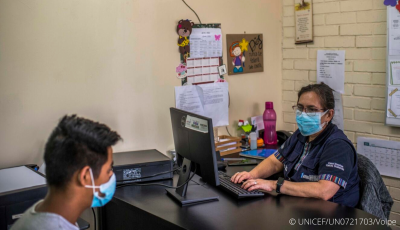 While the importance of social services workforce is clear in building comprehensive social protection systems, too often the investment and support to strengthen the social service workforce are limited. While acknowledging that challenges vary significantly across different contexts, we focus on three key considerations for policymakers in strengthening the social service workforce within the social protection systems.
While the importance of social services workforce is clear in building comprehensive social protection systems, too often the investment and support to strengthen the social service workforce are limited. While acknowledging that challenges vary significantly across different contexts, we focus on three key considerations for policymakers in strengthening the social service workforce within the social protection systems.
Is there a clear vision of individual functions, coordination, referrals, as well as a clear set of coordination and referral systems across sectors?
It needs to be clear who does what and when, in a given case. This requires ministries and implementing agencies to come together to develop and improve joint standard operating procedures, that cover assessment, decision making, referral, follow-up and review. Strong referral and coordination systems also require professionals, para professionals and community volunteers across sectors - not only in the SSW but also in allied sectors such as health, education and justice - to be regularly trained together. This helps building cross-sectoral working relationships based on trust and mutual recognition.
Are governments investing enough in the social service workforce for them to be able to fulfill these functions?
Despite the urgent needs, the number of social service workers is often limited, and inadequate for them to perform all their essential functions, at different levels.[4] This leads to families and individuals not having access to the right level and type of quality services of social care support and protection, when most needed. It also leads to overload among the social service workforce. Building a social service workforce takes high-level commitment and resource allocation, particularly at national levels.
Human resource needs should be met to enable the workforce to effectively administer and implement integrated support, including for integrated/cash plus programs. Sufficient human resources will also ensure that social service workers and social protection administrators are not overwhelmed with excessively high caseloads, which could in turn lead to prolonged stress, burnout, high turnover and reduced service quality.
Is the arrangement of functions and services designed to be accessible and coordinated from the perspective of families, children and individuals?
A common experience of people seeking help to address complex social needs is that, even if they can access one type of help, e.g. a cash transfer for parents of a young child or child with disability, they struggle to access help to address other needs or risks, e.g. poor or insecure housing, a suitable school for a child with special needs. Excessive time and effort spent seeking different forms of help can have a range of adverse effects, from loss of confidence and motivation, to heightened risk. Even when help is accessed, it is often not coordinated or incompatible. Accessing one type of help, such as employment or housing, might result in the applicant losing their ability or entitlement to access equally important services such as suitable child care, schooling or protective services. Furthermore, inquiries into the reasons why services to protect children or women from violence often fail have found one of the most common reasons to be lack of information sharing, risk assessment and referral systems that cross agency and district boundaries.[5] Investment, planning and capacity building is therefore needed to develop and sustain a workforce that can apply a ‘no wrong door’[6] approach to ensure all key types of help are accessed by those in need, and a coordinated, inter-agency approach to protect those at risk. To provide such services requires a needs-led, rights-based, and person-centred approach, which focuses on ensuring that support, care and protection is responsive and tailored to individuals and families’ needs. This should be the approach taken by social service workers, including those involved in administering and providing social assistance including cash transfers and other programmes, characterised by a determination to stay with the individual or family till their problem is fully resolved, while helping build their coping strategies and resilience in the long-term.
End Notes:
[3] UNICEF (2019) Guidelines to Strengthen the Social Service Workforce for Child Protection
[4] Although there is no single recommended ratio of number of social service workers to a given population, and one would be hard to define as local contexts and definitions of the workforce vary widely, GSSWA reviews (2017-2019) covering close to 50 low and middle income countries reveal mostly very low ratios, ranging from 0.3 per 100,000 children in West Bengal, India, to 781.2 per 100,000 children in the Maldives, but averaging about 50 per 100,000 child population. By contrast, WHO recommends a minimum ratio of 445 doctors, nurses and midwives per 100,000 total population. However, the definition of SSW used in many of these national estimates does not include the full range of community volunteers and para professionals often involved at the most local level.
[5] The Victoria Climbie Inquiry: report of an inquiry by Lord Laming (2003) and Every Child Matters (2003) HM Treasury, UK. https://www.gov.uk/government/publications/every-child-matters
[6] No Wrong Door: A Holistic Approach to Human Services (undated). Developed and written by the Governing Institute (USA) custom media division, with information and input from RSM.
Resources:
BASW and CWIP. (2019). Anti-poverty Practice Guide for Social Work. Birmingham. British Association of Social Workers. https://www.basw.co.uk/system/files/resources/Anti%20Poverty%20Guide%20A...
Global Social Service Workforce Alliance (GSSWA) Resources, including regional mapping reports: https://www.socialserviceworkforce.org/alliance-developed-resources
GSSWA (2015). Para Professionals in the Social Service Workforce: Guiding Principles, Functions and Competencies. 2nd edition
GSSWA (2017). Global Advocacy Toolkit for the Social Service Workforce
GSSWA (2019). Guidance Note on Defining the Social Service Workforce.
Martorano and Sanfilippo (2012) Innovative Features In Conditional Cash Transfers: An Impact Evaluation Of Chile Solidario On Households And Children. UNICEF Innocenti Working Paper. https://www.unicef-irc.org/publications/pdf/iwp_2012_03.pdf
UNICEF ECA (2018) Strengthening the Social Work and Social Service workforce in Europe and Central Asia as an Investment in Our Children ’ s Future: A Call to Action. https://www.unicef.org/eca/media/6621/file/Call-to-action-Monitoring-Fra...

“A problem shared is a problem halved”
Submitted by Alena Sherman on Wed, 10/19/2022 - 5:59pmby Rebecca Smith, Head of Child Protection Programmes, Save the Children International
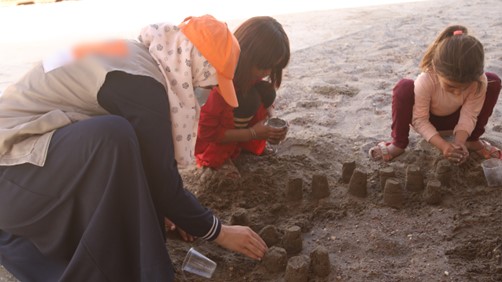
In honour of World Mental Health Day on the 10th of October, I attended a Global Ministerial Mental Health Summit in Rome where senior leaders from around the world were placing a spotlight on issues related to mental health. As we celebrate the Social Service Workforce this week, a workforce absolutely critical for supporting the mental health of individuals and communities, it is vital that we also address their own mental health and the systems and structure that help them succeed.
At Save the Children, our staff and partners provide services in some of the most sensitive and insecure locations you can imagine. On a daily basis they face devastating, highly stressful, and sometimes life-threatening situations which directly affect their own psychosocial wellbeing.
Suzan Akwii, our Child Protection Specialist in the Syria response, stated that staff working in camps in AlHol North East Syria, commonly report sleep disturbances, anxiety and panic, nightmares, and mood disturbances which if unattended could result in chronic mental health issues. This is not unique. According to a new report by the WHO at least a quarter of health and care workers surveyed reported anxiety, depression and symptoms of burnout.[1]
Globally there is a need to reduce the stigma around mental health and to promote and scale up approaches to improve the care of the global social service workforce. As Rasha al Hosain, a mental health and psychosocial support youth advocate stated so eloquently, “It’s okay not to be okay. It’s okay to seek help. It’s okay to heal.”
Save the Children has been developing a global competency framework on what it means to be a child protection professional and a key component of this is how to support their own staff with the challenges they face. Supportive supervision is a vital component to helping workers to reflect on what is both inside and outside of their own control. Supervisors can help staff to think through complex cases and also reflect on how they are coping and when they may need time off or additional support.
According to Lo Leang, the Head of Child Protection in Save the Children Cambodia, “Just by talking about the challenges, it is a relief – because some of the challenges are structural. It can help the case workers make sense of the complexity and remember why they are doing what they do – instead of internalising the challenges.” In a video created by the Better Care Network, Lo reflected that despite the importance of supervision, it is often overlooked, particularly where social work is a new or emerging profession. This learning helped to inform and develop a structured social work supervision training programme in Cambodia and fed into the Global Social Service Workforce Alliance (2020) Guidance Manual on Strengthening Supervision for the Social Service Workforce.
Supporting the mental health of staff also means looking at the structural challenges they are facing, ensuring that there are adequate staff to client ratios and that we continue to advocate for legislative and policy changes that are needed.
Empowering the social service workforce with power and agency to help be advocates not only encourages much needed change, but also supports their own ability to take action and feel like they are making a difference.
Global spotlights, like World Mental Health Day and the Social Service Workforce week provide the opportunity to champion our unsung social service workforce and make sure the resources and capacity is there to support the mental health of those supporting children, families and communities.
[1] Qatar Foundation, World Innovation Summit for Health (WISH), in collaboration with the World Health Organisation (WHO). 2022. Our duty of care: A global call to action to protect the mental health of health and care workers.

Ukraine and New Paradigms in Social Development: The Work of the Kamenets Podisk / IFSW Partnership
Submitted by Alena Sherman on Mon, 10/17/2022 - 3:24pmBy Rory Truell, IFSW Secretary-General
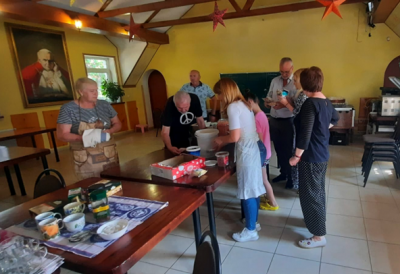 Elina showed me how they seal the plastic bags. Just before placing the open ends in the heat machine, she places a small piece of paper inside, with a few words written on it. “The Ukrainian people are strong” she translates.
Elina showed me how they seal the plastic bags. Just before placing the open ends in the heat machine, she places a small piece of paper inside, with a few words written on it. “The Ukrainian people are strong” she translates.
Elina is one of many women who founded and work in the local kitchen at the Community Social Work Centre. It is one of the first projects supported by a partnership between the Kamenets Podisk District Council, local communities and the International Federation of Social Workers. Together the partners have developed an approach which transforms the idea of ‘humanitarian aid’, (which too often strips peoples of their capabilities) into resourceful and confident communities with a hope for a strong future.
Elina explains to me that the contents of the bag are mixed grains and herbs to form dehydrated barley soup. Three hundred grams make five liters of thick nutritious food. The next bag has a more reddish substance and I ask if it is Borshch. “You know Borshch?” she asks with some surprise.
The dehydrated packets are easily distributed to displaced people, those at the front lines and anyone who has lost their normal food supply as a consequence of the war. Everything in the package has been shrunk through hydration and all the necessary herbs and spices added. All that is required is for clean water to be added and bought to a boil for about 40 minutes. The women in this Community Kitchen produce about 1,200 meals a day, making a significant contribution to food security in their distribution network. It is one of many projects that brings the community together, recognizing their strengths, creating opportunities for mutual support and ensuring people have an active role in their own futures.
Another example of such projects is focused on making bed frames and furniture, as more people are arriving in the district with nothing but the clothes on their backs. With the coming months of winter and dampness, the challenge for finding beds, cupboards and wardrobes has become urgent. Under such pressing conditions, finding the material and machinery to manufacture mattresses has not been possible. Thanks to the Romanian Social Work Association, these are being donated and bought in by trucks from across the border. The frames and side cupboards will be produced locally in an initiative supported by the Kamenets Podisk / IFSW partnership.
With each of these examples, the approach is to support the local communities to, where possible, develop their own enterprises, as the economy has ground to a halt. This comes at a time when people have not been paid since the start of the invasion and industries crashed when men were drafted into the army. This approach is built from social work experiences from other countries experiencing war or natural disasters as well as from successful examples of transforming poverty into thriving communities and societies. It is an approach that prioritizes local-led development over relief-aid and transforms the concept of aid into support for self-sustaining social and economic development.
The partnership between the Kamenets Podisk District and IFSW has worked carefully to consider these dynamics. The partnership has supported, encouraged and facilitated community enterprises and, in the case of the above examples, supplied the dehydration machines and an industrial dough machine in the Community Kitchen. But these examples only represent the beginning aim of this approach and its overarching vision. Further down in this article we will explore other examples. Before that, however, it may be important for some readers to hear more about why the traditional aid model is not the preferred option.
The challenges of traditional aid approaches
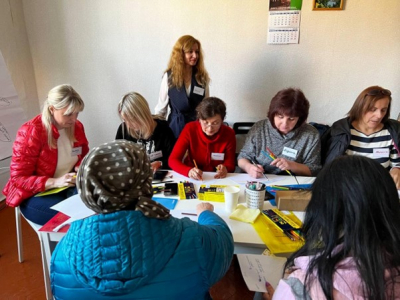 Globally, social workers have witnessed unintended long-term consequences and prolonged devastation bought about from traditional aid approaches. International aid in many situations of war and extreme crisis is often blind and deaf to local strengths and does not have the necessary principles and processes to form partnerships with local communities. Consequently, when food or clothing is provided free, any chance of local communities maintaining or adapting their local economy is immediately broken. No one can cost-effectively produce products when the same products are being distributed by aid agencies for free. Therefore, manufacturing machinery lies dormant, workers are displaced without income, and an environment of dependency emerges. We know from situations of crisis that when people are dormant, waiting for their water, their meals or their small cash payments, they often report feeling powerless, worthless and frustrated. Such situations often prolong or exacerbate their emotional and psychological challenges. Yet when people are active in their own recovery or a part of rebuilding their community’s future, their trauma symptoms are significantly reduced.
Globally, social workers have witnessed unintended long-term consequences and prolonged devastation bought about from traditional aid approaches. International aid in many situations of war and extreme crisis is often blind and deaf to local strengths and does not have the necessary principles and processes to form partnerships with local communities. Consequently, when food or clothing is provided free, any chance of local communities maintaining or adapting their local economy is immediately broken. No one can cost-effectively produce products when the same products are being distributed by aid agencies for free. Therefore, manufacturing machinery lies dormant, workers are displaced without income, and an environment of dependency emerges. We know from situations of crisis that when people are dormant, waiting for their water, their meals or their small cash payments, they often report feeling powerless, worthless and frustrated. Such situations often prolong or exacerbate their emotional and psychological challenges. Yet when people are active in their own recovery or a part of rebuilding their community’s future, their trauma symptoms are significantly reduced.
“At the Community Social Work Centre, we use the social work model,” Yana Melnychuk the Centre’s coordinator explained to me. “We have many resources and ideas here in Kamenets Podisk District. Yes, we are under attack and war. Yes, many of our loved ones are at the battlefields and we are so scared for them every moment. But we are still strong people. We know what to do, we know our community and how everyone must be supported and involved for our survival now, and for our future. We welcome every donation, and we will make sure that each cent goes to supporting our sustainable survival via our interdependency, and not by the dependency aid model. By working together, we will not just survive we will thrive,” she said.
The partnership and other IFSW projects do not reject all aid, and financial aid is always welcomed, providing the people who need it can collectively (as much as possible) be involved with how it should be spent. Examples of the healthy use of outside financial support can be seen in money used to purchase mattresses and dehydration machines for this partnership (funded by donations from international social work associations). Examples can also be seen in the IFSW’s work supporting Ukrainian refugees as they move from the war zone through bordering countries.
Social workers who set up information points during the refugees’ journeys on many occasions called for external financial support and the donation of clothes, sleeping bags, and medicine, and for members of the public to host or drive refugees to their next point. As people were on the move, it was simply not possible to support the development of their local economy, nor did the refugees request this. They were more interested in which countries would give them and their children the best opportunities and where they could have somewhere safe to rest for a while and have something to eat.
Having learned from other refugees’ journeys, the social workers involved in the Ukraine situation focused on not having temporary camps or tent cities. In those environments, people can get trapped for months or years in frustrating, almost institutionalized conditions: ‘Breakfast is at 7:00, lunch is at 12:00. Never leave the camp without permission. A doctor comes on Wednesdays and an immigration expert on Fridays’, and so on. Instead, the social workers have worked alongside communities in receiving countries to open their homes to refugees and for the public schools to integrate refugee children. They have utilized donated funds to support refugees in converting buildings into medium-term accommodations with community kitchens and support systems. They have sought funding for the development of small businesses that utilize the refugees’ skills or negotiated with employers in other parts of Europe that had shortages of workers and sought funding to support the refugees’ transportation to these areas.
The success of this work, like that in the Kamenets Podisk district, requires the social workers to have their eyes and ears open to what the refugees want and recognize refugee capabilities and strengths in leading their own development. The approach does not reject donations, which are still needed, but it does reject the aid mentality, which is the dominant approach to social development in crisis situations, as it cannot translate the circumstances of crisis to situations of opportunity.
The Approach of the Kamenets Podisk / IFSW partnership
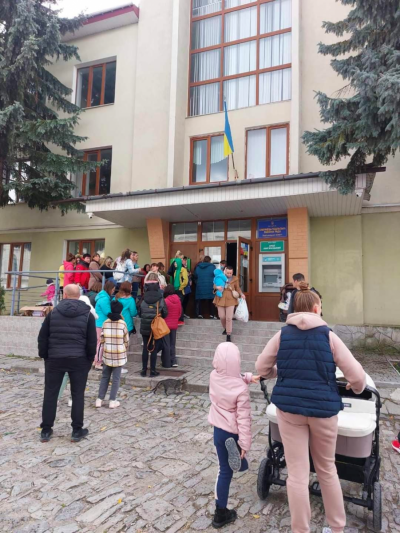 Kamenets Podisk / IFSW partnership has listened to people that have worked through change and are consequently using an ‘inside out’ model of development. The decisions are made on the inside by the people struggling but are informed by experiences in other places. This has shown the wisdom to think long-term, to create a local vision that sets a new course of life, beyond this war, a vision for a life even better than before this crisis.
Kamenets Podisk / IFSW partnership has listened to people that have worked through change and are consequently using an ‘inside out’ model of development. The decisions are made on the inside by the people struggling but are informed by experiences in other places. This has shown the wisdom to think long-term, to create a local vision that sets a new course of life, beyond this war, a vision for a life even better than before this crisis.
Therefore, in addition to finding ways to accommodate and feed the 50,000 plus displaced people newly arrived in the district, a social diagnosis and skills audit is being undertaken to evaluate the resources sitting in the community. Teachers, manufacturers, trades people, community organizers, carers, scientists and others are being identified and supported to apply their skills in restarting or creating new enterprises for everyone’s good.
Simultaneously the Community Social Work Centre provides a drop-in service where everyone will be greeted and given an opportunity to sit, talk and participate. Programmes are offered including childcare and schooling for children to enable parents, mostly women, to enter the workforce or join community projects. Respite care progammes have also been developed, giving overburdened moms or dads time when needed. Support groups have been created so that no one feels isolated and newly arrived displaced people are welcomed. There are no barriers to participation and community members are also encouraged to play a role in the organization and delivery of the programmes. To assist with the challenges of traumatized soldiers coming home while on a few days leave, groups have been established to provide information and care. They also provide social education so that all in the district can understand the symptoms of war-related trauma and can act upon them.
And the Centre does not stop there…
In a relatively cashless society (due to the economy breaking down), the Community Social Work Centre staff and volunteers are transforming an old warehouse into a community social exchange supermarket. When possible, this supermarket will buy and provide local products, only importing essential items that cannot be made locally. Each item will have a price which can be purchased in cash or in exchange for points that people have acquired while working within the community. People like Elina in the Community Kitchen, Kayta who teaches math to children, or Aliona who photographs families to send to their loved ones at the frontline.
Conversations for the community to provide its own social exchange supermarket in the longer-term are already taking place, as there have been discussion around the need for a permanent food and accommodation social security strategy for refugees who return after the war.
‘What will happen when a bus load of institutionalized children return after the invasion ends,’ one person asks. This question refers to pre-war social service systems that were based on former Soviet systems. Under such systems many children with disabilities were placed in large institutions away for their families and communities. ‘We will need to rebuild our communities to include them,’ came a reply.
These conversations bounce through the Community Social Work Centre, across the tables and cups of coffee, the stacked boxes of winter jackets waiting to be distributed, the emergency food kits, the teaching whiteboards and the children’s toys. Conversations focused on making food today but thinking ahead to after the war. They each speak of hope, mutual support and recognition of each person’s role in fulfilling that vision.
A Learning Experience
The Kamenets Podisk / IFSW partnership is not approaching their response with any strict criteria. It is a practical approach, adapted from learning of other people in crisis situations. The key to the success of this approach and others, in different cultures and with different challenges, has been one very clear factor: locally led development.
Social workers have been critical to the outcomes: using their skills to bring people together in recognizing their combined strengths and finding outside support and funding focused on people and sustainability, not just immediate relief. Finding international solidarity and support is an essential pillar to making these projects move forward. IFSW, therefore, invites international funding agencies and all policy makers concerned with the journey from crisis to prosperity, to come, observe and participate in this transformational approach to international development.
I asked Elina, working in the Community Kitchen, if she would mind officials coming to see what they are achieving in the Kamenets Podisk District. She replied, “This work, this place, these people, give me hope [and] I want everyone to have hope. I want them to come from every country to learn how to make this food, to see how we do it. I want them to learn that their people are strong, like ours are. When we respect each other at home and in other countries, maybe then we will stop having wars.”
Acknowledgements: I would like to thank and acknowledge the leadership team involved with all of these developments. From the Ukraine Kamenets Podisk District, Mykhailo Simashkevych, District Mayor, and Yana Melnychuk, Coordinator of the Community Social Work Programme. From IFSW, Ana Radulescu (IFSW European Regional President) with the support of Herbert Paulischin and Alexandra Zoituc and the team from AsProAs (The Romanian Association of Social Workers).

Bringing together clinical and community partners for better health outcomes through PEPFAR
Submitted by Alena Sherman on Fri, 10/14/2022 - 10:11pmThe social service workforce can play a unique and powerful role in supporting individuals and communities in addressing social determinants of health. However, for health systems to gain the most from the unique skills and competencies of social service workers, care must be taken in determining how these workers are deployed. The Global Social Service Workforce Alliance’s recent technical report, Social Service Workers in Health Facilities: Their Role in Addressing Social and Other Determinants of Health Among Children and Families, finds the most common models for deployment to include the roving or liaison model, the permanent on-site support model and the interprofessional team model. In lower-resource settings or where integration of social services into health is developing, a roving or liaison model with substantial time spent doing home visits may be the most appropriate. It has also been applied with support from donors seeking to strengthen linkages between clinics and communities within an existing health system but without making significant changes to staffing or infrastructure.
People-centered care has long been practiced within the U.S. President’s Emergency Plan for AIDS Relief’s (PEPFAR) Orphans and Vulnerable Children (OVC) programming. With an emphasis on wraparound services and close collaboration with partners operating in health facilities, PEPFAR OVC implementing partners have shown promising results integrating health and social services, and the workforces providing them, particularly using the roving/community liaison model.
In Eswatini, the Insika Project, led by Pact, leveraged existing cadres of home visitors already engaged in comprehensive case management for OVC to disseminate information on the COVID-19 vaccination, then liaise with vaccine mobilizers to register and follow up with children and caregivers over the two-dose series. Administered either at home by a visiting nurse or at a community site, 74 per cent of project beneficiaries offered the vaccine have now been vaccinated compared to 60 per cent of non-project beneficiaries in the same geographic areas. The highest-performing areas are where vaccine mobilizers are paired with nurses in roving teams. This success is attributed to stronger relationships, regular engagement, and the resulting rapport and trust between project beneficiaries and the home visitor connecting them to the health facility, creating increased demand for vaccines.
In Zambia, the Empowered Children and Adolescent Program 1, led by the Center for Infectious Disease Research in Zambia, and the SAFE Project, led by John Snow, Inc., developed an intensified approach to community viral load sample collection. Community case workers identify young people who have missed or are having difficulties making their appointments as part of their routine case management home visits. The community case workers are paired with facility case workers who verify the patients’ viral load status and facilitate access to testing provided on the weekends in nearby sites. This schedule is often preferred by adolescents who are either in school or uncomfortable waiting in long lines at health facilities. Viral load coverage at Nchanga North Referral Hospital, in the catchment area where this intensified approach has been deployed, has improved from 72 per cent in January 2021 to 97 per cent in March 2022.
In Zimbabwe, the Catholic Relief Services-led Pathways Project, in conjunction with the Ministry of Health and Child Care, trained 86 points of contact from among para professional social service cadres, like lead childcare workers, and stationed them at health facilities.
“Traditionally, in health facilities and for clinical workers, there has not been much space for social worker contributions…Slowly and progressively, we see some appreciation and acknowledgement of their role…People are beginning to find each other and appreciate that nobody is coming to intrude in each other’s space but to complement each other,” observed Richard Savo, Deputy Chief of Party for the project.
With agreements in place between the clinical and OVC implementing partners, and using a case management approach, these points of contact help children and families affected by HIV navigate needed services. They track them at the household level and monitor their risk of dropping out of treatment through close coordination with village health workers and community and childcare workers engaged by local implementing partners in nine districts. During COVID-19 shutdowns, the points of contact ensured multi-month supplies of medications were dispensed to HIV-positive patients to support adherence to treatment while regular health services were disrupted. Overall, the project has achieved a success rate of 95 per cent of HIV positive people who previously stopped taking their medication return to care.
For more information on the different models for deployment of social service workers in health facilities, read the full technical report: Social Service Workers in Health Facilities: Their Role in Addressing Social and Other Determinants of Health Among Children and Families.

Five overarching advantages of having social service workers in health facilities
Submitted by Alena Sherman on Fri, 10/14/2022 - 10:02pm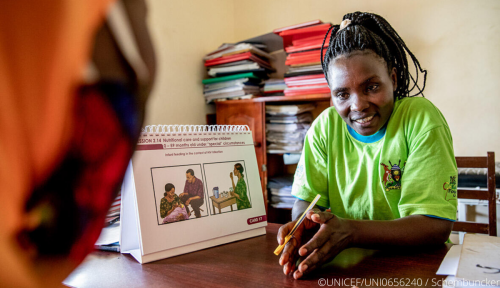 The Global Social Service Workforce Alliance’s recent technical report, Social Service Workers in Health Facilities: Their Role in Addressing Social and Other Determinants of Health Among Children and Families, finds that with a social service workforce working in and linked to health facilities, there is much more potential for health systems to not only address clinical needs effectively and efficiently, but to tackle the inequities present in health care provision itself. Integrating social service workers in health facilities also allows countries to work towards more just, people-centered health systems and universal health coverage, in line with Sustainable Development Goal 3.
The Global Social Service Workforce Alliance’s recent technical report, Social Service Workers in Health Facilities: Their Role in Addressing Social and Other Determinants of Health Among Children and Families, finds that with a social service workforce working in and linked to health facilities, there is much more potential for health systems to not only address clinical needs effectively and efficiently, but to tackle the inequities present in health care provision itself. Integrating social service workers in health facilities also allows countries to work towards more just, people-centered health systems and universal health coverage, in line with Sustainable Development Goal 3.
Five cross-cutting advantages or benefits of having social service workers deployed in health facilities include:
- Enabling a holistic approach to health care: The involvement of the social service workforce in health facilities can expand the traditional medical model, which focuses on diagnosing and treating disease with medical interventions, with a recognition of and support for the social and other factors that enable more effective and lasting treatment. Incorporating this “social work” lens can result in fewer periods of ill health and increased access to advice and support to make changes in certain at-risk populations’ behaviour, social situation and environment, resulting in reduced hospital readmission rates, reduced length of patient stays in hospital, and reduced costs for health providers and/or patients.
- Addressing the social determinants of health: A significant proportion of the underlying factors contributing to poor health are social and behavioural, as much as physiological. In identifying, preventing and ameliorating these factors—including poverty, social exclusion, poor nutrition and housing, hazardous living conditions, abuse and violence—the social service workforce can play a key role in preventing or reducing illness and a range of health conditions. The preventive role can involve primary prevention (preventing initial onset of health conditions in the whole population) as well as secondary prevention (preventing or reducing ill health amongst the most at-risk populations or preventing its recurrence).
- Coordinating integrated care and support by working across sectors and disciplines: The social service workforce is trained and ideally placed to assess, plan, and coordinate complex packages of care and support. This care may involve input from medical practitioners and therapists, the support of community volunteers and civil society groups, and coordination with local social welfare departments, early childhood services and schools, labour services, housing departments and police.
- Early identification and coordinated intervention in cases of violence against children, women or elders: Deployment in health settings can enable social workers with statutory child protection roles, as well as those involved in the assessment and intervention in cases of intimate partner violence, sexual violence and elder abuse, an opportunity for early identification of risk factors and signs of abuse as presented in injuries, behaviour or concerns expressed by patients or their family member on admission to hospital or when arriving for emergency treatment. Once risks and concerns are identified, social workers in health settings are well placed to carry out multi-disciplinary assessment, and lead coordination with police and other statutory colleagues in child protection agencies, in the process of holding multidisciplinary case conferences, planning joint interventions and carrying out multi-agency reviews of such cases.
- Supporting patients across the life course: Since the role of social workers, supported by the wider social service workforce, is to help support people through all the major challenges and transitions they face in life, their deployment alongside health colleagues enables them to provide timely and tailored support to patients, to help them navigate these life challenges and transitions. Prominent examples include supporting older people to return home through organising the care and support they need following a fall or stroke and supporting the most vulnerable mothers and their infants—including adolescents, those without the support of a partner or family, or those experiencing intimate partner violence—through pregnancy, childbirth and early childhood.
Read more about the important role of social service workers in health facilities and how they can most effectively be deployed in the the full technical report: Social Service Workers in Health Facilities: Their Role in Addressing Social and Other Determinants of Health Among Children and Families.

Moldova’s Voices of Care Reform
Submitted by Alena Sherman on Thu, 10/13/2022 - 4:03pmChanging the Way We Care (CTWWC) Moldova works in partnership with leaders in the care reform sector to support the Moldova social service system to ensure it has the capacity, infrastructure and services at the local level to serve all children and families.
Recently, CTWWC released a video series titled Voices of Care Reform to detail the work of CTWWC’s partners engaged in family care initiatives—from supporting members of the social service workforce working with vulnerable families to working with governments, civil society and faith-based communities in Moldova to promote and support safe and nurturing family-based care for all children.
Video 1: Changing the Way We Care: Refugee Work in Moldova
Since Russia invaded Ukraine on February 24, 2022, hundreds of thousands of people have fled to Moldova. Often the first people refugees meet are social workers like Natalia who works with CTWWC partner, Partnership for Every Child, and is featured in the video below. When refugee families started entering Moldova, Natalia rushed to the front line to help. CTWWC Moldova trained social workers on psychological first aid (PFA) and safe responses in emergencies to support front-line members of the social service workforce and their vital work.
Video 2: On the Frontlines: Impact of Psychological First Aid in Ukraine Response in Moldova
Changing the Way We Care’s reach extends far beyond training members of the social service workforce. The initiative also supports ways to provide family-based alternative care for children who cannot live with their immediate families, including the care of children by extended family members or foster families. In this video, Ala Nosatii, a pioneer in the foster care system in Moldova, relates the story of new foster care parents being introduced to three siblings that will be in their care. Ala works for CCF Moldova, one of Changing the Way We Care’s partners in the effort to transform the care system to ensure all children live in safe and nurturing family environments.
Video 3: Voices of Care Reform: “I’m going to call you Mom.”
Changing the Way We Care also works with Moldovan partners that champion the acceptance and inclusion of people with disabilities, such as Keystone Moldova. In this video, Dr. Ludmila Malcoci, a tireless advocate for people with disabilities, recounts the changes she has witnessed over past 20 years in Moldova that will have a positive impact on an entire generation of young people with disabilities.
Video 4: Voices of Care Reform: Dr. Ludmila Malcoci
This Global Social Service Workforce week, we celebrate all members of the social service workforce. May their work be recognized for its critical importance and improvement of the lives of children and families.
To learn more about CTWWC’s work in Moldova go to www.changingthewaywecare.org/Moldova.

Critical Role of Social Workers in Somalia’s Drought Response
Submitted by Alena Sherman on Thu, 10/13/2022 - 3:42pmBy the Action of Somali Social Workers (ACSOS)
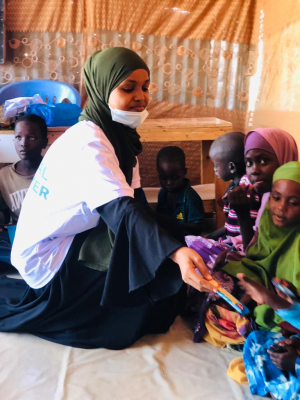 Somalia is currently suffering from its worst drought in decades. The drought has resulted in crop failure, livestock deaths and the loss of assets. As a result, it has caused widespread displacement, hunger and malnutrition. According to the United Nations High Commissioner for Refugees (UNHCR) and the Norwegian Refugee Council (NRC), a total of 1 million people have been internally displaced in Somalia since the drought began in January 2021.
Somalia is currently suffering from its worst drought in decades. The drought has resulted in crop failure, livestock deaths and the loss of assets. As a result, it has caused widespread displacement, hunger and malnutrition. According to the United Nations High Commissioner for Refugees (UNHCR) and the Norwegian Refugee Council (NRC), a total of 1 million people have been internally displaced in Somalia since the drought began in January 2021.
The Action of Somali social workers (ACSOS), a non-profit social work institution, is working to address the impact of the current drought by aiding those most affected. Social workers associated with the organization are helping provide individuals and families with basic necessities, such as food and water, in areas most affected by the drought. In the cities of Garbaharey, Dollow, and Luuq, ACSOS social workers are delivering food and water aid to over 1,000 internally displaced persons (IDPs). In the Kahda and Dayniile districts, social workers are providing aid and other services to over 10,000 IDPs. This includes providing guidance and counseling for parents and children and making referrals to hospitals for those with critical health conditions.
Since the drought began nearly two years ago, social workers have been at the frontlines of the drought response, helping to save the lives of millions of children and families. According to Child Protection Coordinator for ACSOS, Sumaya Abdi, “case workers are playing an essential role [in response efforts]. Our case workers have registered more than 430 children suffering from severe acute malnutrition (SAM), 371 of whom are now in very good condition. In addition, they have helped create a child-friendly space so that children can recover from the stress and trauma they have experienced and get an emergency education.”
As the drought continues, so does the work of the social workers. However, they are often met by challenges and limitations such as the lack of capacity building and a resource shortage. The organization will have to surpass these challenges in order to speed up the services provided by the social workers.

Social work intervention in South African schools
Submitted by Alena Sherman on Wed, 10/12/2022 - 1:22pmWritten by Marissa Jordaan with contributions from Mollie Kemp, Rochshana Kemp, Marelize Vergottini and Edmarie Pretorius on behalf of South Africa's National Committee on School Social Work Education and Practice (NACOSSWEP)
Once upon a time…
Researchers identified the need to include school social workers in the South African education system more than 40 years ago and Professor H. Rocher was a pioneer of laying the foundation for school social work. Since the first democratic elections in South Africa in 1994, many policies implemented by the Department of Basic Education have acknowledged the role of the social worker within the multidisciplinary team in the education system.
Wish upon a star…
In South Africa, there are a significant number of learners who are unable to attend school regularly and perform optimally due to the impact of poverty, child abuse, violence, loss and other societal barriers. They are in dire need of care and support and schools often serve as the only place where that can be realized for them. Social workers who render services at schools play a key role in these learners’ access to holistic support, which may include arranging a daily meal, accessing grants, providing therapy, and supporting the family through parental guidance and assistance in accessing services and resources. This multidisciplinary intervention is in line with the Southern African Development Community’s Framework for Care and Support for Teaching and Learning (CSTL) in education.
From dreams to reality…
As a result of this growing need for care and support in schools, social workers are increasingly being employed by the Department of Basic Education in some provinces in their school programmes. Each social worker then serves a cluster of schools, while some are placed in special schools. Some school governing bodies are also taking it upon themselves to employ social workers directly, to serve their school community.
The day-to-day reality…
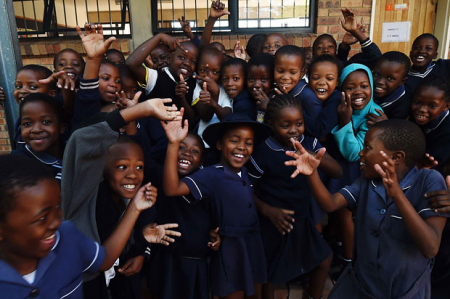 The focus of social work interventions in schools includes prevention, crisis intervention, networking for resources, restorative justice in disciplinary action with the overall aim of providing care and support to school communities within a multidisciplinary team. Social workers are actively involved in removing learning barriers so that children can live, learn and develop to their full potential. With COVID-19 fresh in our minds and in our lives, the psycho-social needs of learners in our schools have increased and some resources have decreased.
The focus of social work interventions in schools includes prevention, crisis intervention, networking for resources, restorative justice in disciplinary action with the overall aim of providing care and support to school communities within a multidisciplinary team. Social workers are actively involved in removing learning barriers so that children can live, learn and develop to their full potential. With COVID-19 fresh in our minds and in our lives, the psycho-social needs of learners in our schools have increased and some resources have decreased.
A beacon of hope…
The number of social workers who are being employed by the Departments of Basic Education and of Social Development, as well as by school governing bodies, is increasing exponentially. School social work is in the process of being acknowledged as an area of specialization in South Africa. In June 2015, the National Association of Social Work established a National Committee on School Social Work Education and Practice (NACOSSWEP) to focus on school social work specialization, education and knowledge development, as well as on development of practice models, practice standards and programmes. This committee has already done the necessary work for the specialization to become a reality. Draft regulations pertaining to the specialization were published for comments and we are currently eagerly awaiting the outcome of this process. One of our Universities, the University of the Witwatersrand (WITS) in Johannesburg, has offered a Master’s in Social Work in the field of School Social Work since 2021, and a short course in School Social Work since 2017, with two other Universities in the development phase of similar courses. It is our hope that, as this specialization is formalized, it would lead to a greater impact in terms of individual lives, as well as broader developmental goals!

Trabajador de servicio social destacado: Una sesión de preguntas y respuestas con Edgar Danilo López Ramírez, Especialista en Fortalecimiento Familiar y Comunitario con Iniciativa “Cambiando la Forma en que Cuidamos”
Submitted by Alena Sherman on Thu, 08/04/2022 - 5:32pm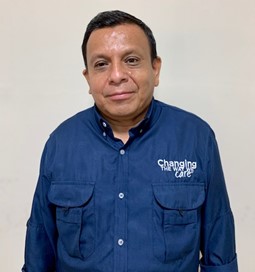
1. Cuéntenos un poco sobre su vida personal, por favor.
Resido en el municipio y departamento de Chiquimula, Guatemala, soy casado, tengo tres hijos hermosos, dos varones y una hembra; disfruto mucho compartir con mi familia, salir juntos en paseos, especialmente en áreas del campo, compartir con la naturaleza y compartir con amigos en común de la familia. Me encanta ver disfrutar a mi familia. Entre mis pasatiempos favoritos está leer literatura de crecimiento personal.
2. Cuéntenos sobre la comunidad o zona donde usted trabaja. ¿Cuáles son los principales problemas que enfrentan los habitantes de la comunidad o zona donde usted trabaja?
Actualmente trabajo en los municipios de Zacapa, Río Hondo y Usumatlán, del departamento de Zacapa, Guatemala, especialmente coordinando con gobiernos municipales y comunitarios, para establecer coordinaciones o alianzas enfocadas en lograr la creación de redes de apoyo para promover el cuidado familiar, proteger a la niñez y adolescencia y evitar la separación familiar innecesaria, especialmente tratando de involucrar a líderes, lideresas y autoridades comunitarias, dentro de sus mismas comunidades.
En el tiempo que tengo de ser parte de la iniciativa y con la experiencia previa en el área de trabajo, he notado la ausencia de diversos actores sociales que realicen acciones dirigidas a la protección de las familias, a pesar de las condiciones socioeconómicos vulnerables y alta exposición de los adolescentes a diferentes riesgos que afectan su desarrollo personal.
También creo que los gobiernos municipales y departamental pueden hacer mucho más para lograr el fortalecimiento de las familias a fin de mejorar sus condiciones de vida y con ello reducir los riesgos de las separaciones familiares innecesarias, especialmente facilitando el acceso a los servicios que las familias necesitan.
En el área de trabajo funcionan tres hogares de protección, con quienes la iniciativa mantiene estrecha coordinación para promover la reunificación de las niñas y niños para fortalecer su vinculación afectiva.
3. ¿Hace cuánto tiempo trabaja en el área social y que es lo que le motivó a formarse como trabajador(a) social, psicólogo, u otra profesión que brinda atención social?
A partir de febrero de 2005 inicio a trabajar en temas sociales, brindando apoyo a familias vulnerables a la inseguridad alimentaria, brindando especial atención a las que entre sus miembros habían niñas y niños menores de cinco años.
Decidí estudiar trabajo social, al darme cuenta que es una carrera profesional que sirve como medio para contribuir al mejoramiento de la condiciones de vida de las familias, especialemente las que residen en el área rural, por medio de la articulación de esfuerzos con otros actores sociales.
4. ¿En qué consistió la formación profesional que usted recibió (título, diplomado, etc)?
A nivel técnico estudié en la Universidad de San Carlos de Guatemala y me gradué en gerencia del desarrollo comunitario, recibiendo formación enfocada a gerenciar procesos de desarrollo comunitario integral, con énfasis en el desarrollo social.
A nivel de licenciatura estudié en la Universidad “Rafael Landívar”, graduándome de licenciado en trabajo social, con énfasis en gerencia del desarrollo. Aunque fueron diferentes casas de estudio el enfoque de estudio fue similar. Recibiendo formación profesional para dirigir, coordinar o liderear procesos de desarrollo de la población guatemalteca.
5. Favor de describir el trabajo que usted realiza actualmente y las principales funciones que ejerce. ¿Qué tipo de atención o servicios brinda usted a niños, niñas, adolescentes y familias?
Entre las principales funciones de mi trabajo está realizar coordinaciones institucionales, para promover el fortalecimiento del sistema de protección de las familias y de las comunidades, para prevenir la separación familiar innecesaria. La creación de redes de apoyo para la niñez y adolescencia a nivel comunitario, municipal y departamental, involucrando y empoderando a las autoridades, lideresas y líderes comunitarios y municipales. También realizar gestiones que generen intervenciones para promover el desarrollo económico de las familias en riesgo de separación innecesaria.
6. ¿Cuáles son los aspectos que más le gustan de su rol o trabajo actual?
En general todo mi trabajo es interesante y me agrada cada actividad que realizo, porque van enfocadas a construir una mejor realidad para las familias y sociedad en general. Pero me genera mayor agrado realizar acciones, mantener comunicación y establecer acuerdos, para lograr que la población y las autoridades comunitarias y municipales sean parte del equipo que se esfuerza por ser parte del sistema de protección de la niñez y adolescencia.
7. ¿Cuáles son los principales retos que usted enfrenta en su rol o trabajo actual y como los enfrenta o resuelve?
Creo que uno de los mayores desafíos es lograr la articulación de los diferentes actores sociales involucrados en el tema de protección de la niñez y adolescencia, porque sus antecedentes son de trabajo desarticulado; pero es un reto que con el transcurso del proceso se va reduciendo la brecha y cada vez más se logra generar el interés por ser parte de ese equipo, por medio de la sensibilización y el empoderamiento sobre la importancia y los beneficios que ellos pueden generar y hacer historia en sus comunidades, municipios o departamentos.
8. ¿Hay algo más que quisiera compartir con nosotros sobre su trabajo, su motivación, sus sueños, etc?
Mi trabajo es una bendición de Dios, porque hago lo me gusta y recibo beneficios salariales, es un medio para servir a las familias y crear mejores condiciones de vida para los NNA. Espero que en el corto y mediano plazo la iniciativa pueda ampliar su área de cobertura para incrementar el numero de familias beneficiarias e involucrar a otros actores sociales del departamento.

Social Service Worker Spotlight: A Q&A with Edgar Danilo López Ramírez, Specialist in Family and Community Strengthening with Changing the Way We Care
Submitted by Alena Sherman on Thu, 08/04/2022 - 5:24pm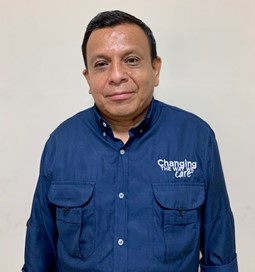
También disponible en español.
1. Please tell us a little bit about yourself.
I live in Chiquimula, Guatemala. I am married and have three beautiful children, two boys and one girl. I really enjoy spending time with my family, going on walks in the countryside and spending time with friends. I also enjoy reading books to help me grow as a person.
2. Tell us about the community or area where you work. What are the main issues or problems the community faces?
I currently work in the municipalities of Zacapa, Río Hondo and Usumatlán in the Zacapa region of Guatemala. I coordinate with municipal and community authorities to establish support networks, involving community leaders and local authorities, focused on promoting family care and protecting children and adolescents from unnecessary family separation.
In the time that I have been part of “Changing the Way We Care” and with my previous experience in this area of work, I have noticed an absence of social actors working to protect families, despite the noticeable socioeconomic conditions making them vulnerable and the exposure of adolescents to risk factors that may affect their personal development.
I believe that local authorities and governments can do much more to strengthen families by facilitating access to services and improving their living conditions, thus reducing the risk of unnecessary family separation.
Three children’s shelters (known as protection homes) operate in the area where I work, with whom we maintain close coordination in order to promote the reunification of the children from the shelters with their families.
3. How long have you been working in this profession and what motivated you to train as a social worker, psychologist, or another profession that provides social care?
In February 2005, I began to work on social issues, providing support to families vulnerable to food insecurity, paying special attention to families with children under five years of age.
I decided to study social work, realizing that it is a profession that contributes to the wellbeing of families, especially those that reside in rural areas.
4. What type of professional training did you receive?
At a technical level, I received training at the Universidad de San Carlos de Guatemala in community development management. This included training on managing comprehensive community development processes, with an emphasis on social development.
At the undergraduate level, I studied at the Universidad de Rafael Landívar, graduating with a degree in social work with an emphasis on development management. Although my two areas of study were different, the approach was similar, both focusing on directing, coordinating and leading development processes for Guatemala
5. Please describe the work you currently do and the main functions of your role.
My main roles are to carry out institutional coordination, to promote the strengthening of the protection system for families and communities, and to prevent unnecessary family separation. I create support networks for children and adolescents at the community, municipal and departmental levels, involving and empowering authorities and community and municipal leaders. I also carry out procedures that promote the economic development of families at risk of unnecessary separation.
6. What aspects of your current job or role do you like the most?
In general, I find all of my work interesting, and I enjoy all aspects of it because it is all focused on building a better reality for families and for society in general. But I most enjoy my work that involves establishing agreements that ensure a better protection system for children and adolescents.
7. What are the main challenges you face in your current role and how do you work to resolve them?
I believe that one of the greatest challenges is to achieve a common goal among the different actors involved in child protection, because everyone has different objectives in their roles. But by raising awareness about the importance and benefits of the work, a common goal can be achieved, and changes can be made in the different communities, municipalities and government departments.
8. Is there anything else you would like to share with us?
My work is a blessing from God, because I do the work that I enjoy, and I receive a salary. My job is also a way to serve families and create better living conditions for children and adolescents. I hope that in the short and medium term the Changing the Way We Care program can expand its coverage area to increase the number of families who benefit from its services.

